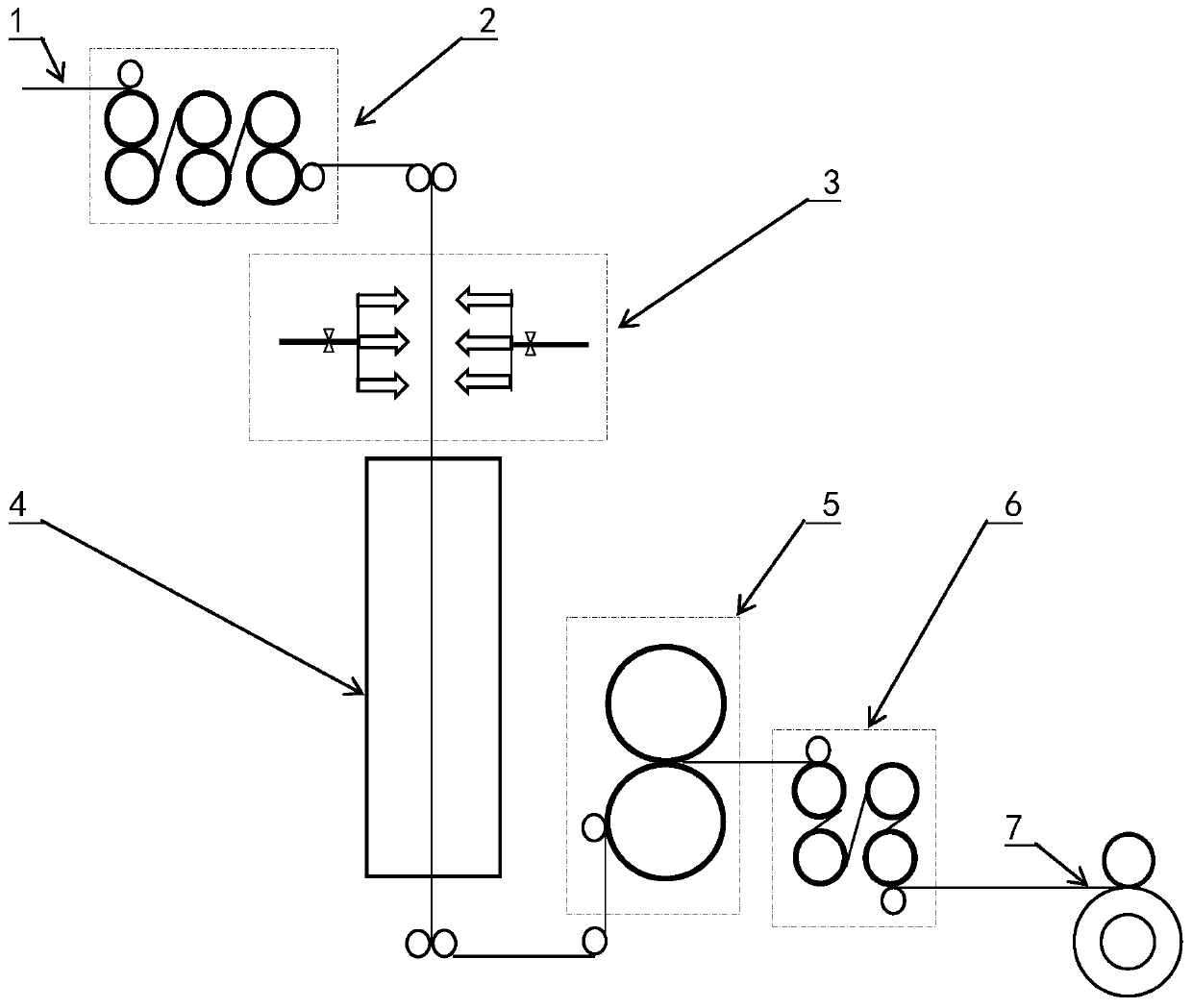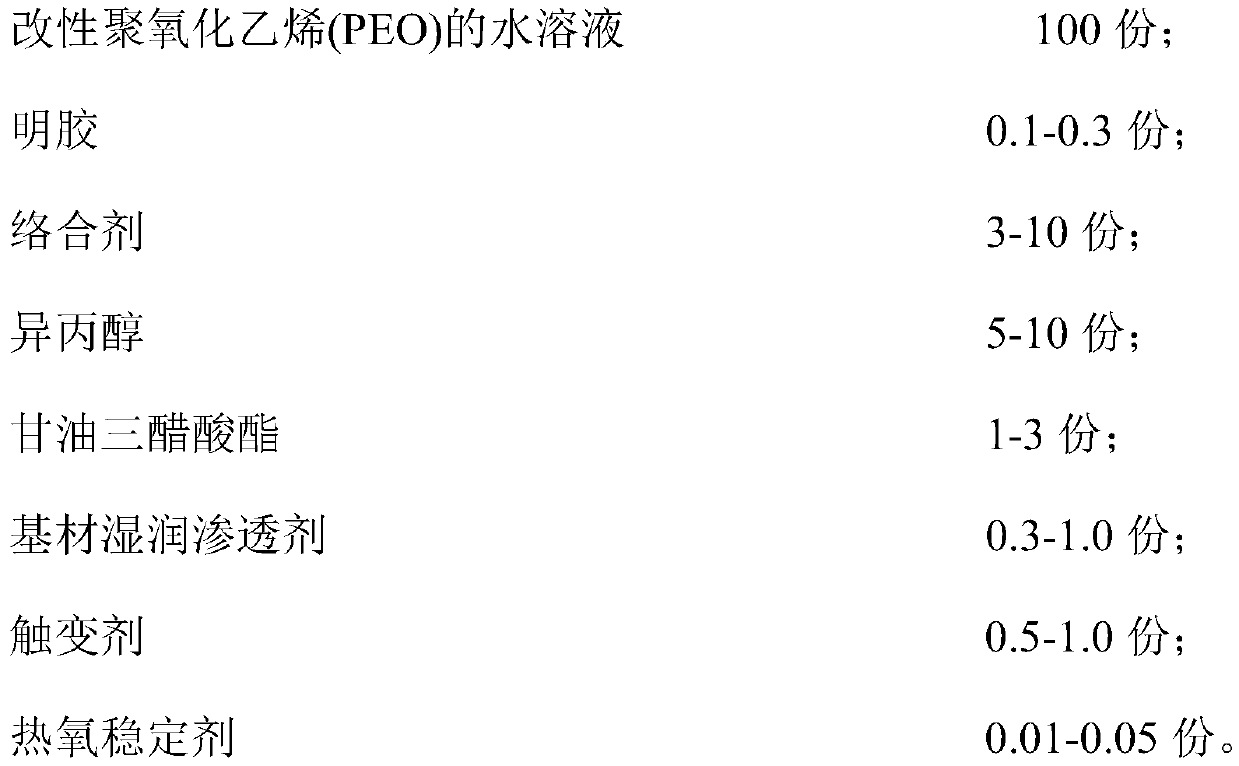Modified polyvinyl alcohol non-woven fabric and preparation method and application thereof
A polyvinyl alcohol, non-woven technology, applied in textile and paper making, improved hand fiber, spray/jet textile material processing, etc., can solve the problems of intensified decomposition, low processing efficiency, sharp increase in cost, etc. The effect of improving performance, improving processing efficiency, and broadening application fields
- Summary
- Abstract
- Description
- Claims
- Application Information
AI Technical Summary
Problems solved by technology
Method used
Image
Examples
Embodiment 1
[0050] The preparation method of modified polyvinyl alcohol non-woven fabric according to figure 1 The device diagram and the following methods are performed:
[0051] The polyvinyl alcohol non-woven fabric 1 to be modified enters the preheating zone 2 to fully preheat the non-woven fabric; the preheated non-woven fabric enters the metering spray device 3 for double-sided spray coating modifier Then enter the air flotation drying oven 4 for drying; the non-woven fabric after drying enters the calendering (embossing) device 5 and carries out the calendering (embossing) roller calendering (embossing) process; finally enters the double cooling roll 6 Cooling and shaping, winding into the modified polyvinyl alcohol non-woven fabric 7 described in the finished product.
[0052] In Example 1, the temperature of the triple (pair) heating rollers in the preheating zone 2 is controlled at 65 / 80 / 90°C; ℃ for drying; duplex cooling roll 6 temperature control is 25 / 20 ℃. (The same below...
Embodiment 2
[0064] Modification method of polyvinyl alcohol non-woven fabric according to figure 1 The setup diagram and the following method are performed.
[0065] The polyvinyl alcohol non-woven fabric 1 to be modified enters the preheating zone 2 to fully preheat the non-woven fabric; the preheated non-woven fabric enters the metering spray device 3 for double-sided spray coating modifier Then enter the air flotation drying oven 4 for drying; the non-woven fabric after drying enters the calendering (embossing) device 5 and carries out the calendering (embossing) roller calendering (embossing) process; finally enters the double cooling roll 6 Cooling and shaping, winding into the modified polyvinyl alcohol non-woven fabric 7 described in the finished product.
[0066] In embodiment 2, the grammage (GSM) of unmodified polyvinyl alcohol nonwoven fabric is: 100 grams / m 2 Non-woven fabric produced by hydroentanglement; the amount of modifier for coating is 25 g / m 2 ; The moisture conten...
Embodiment 3
[0076] Modification method of polyvinyl alcohol non-woven fabric according to figure 1 The device diagram and the following method are performed.
[0077] The polyvinyl alcohol non-woven fabric 1 to be modified enters the preheating zone 2 to fully preheat the non-woven fabric; the preheated non-woven fabric enters the metering spray device 3 for double-sided spray coating modifier Then enter the air flotation drying oven 4 for drying; the non-woven fabric after drying enters the calendering (embossing) device 5 and carries out the calendering (embossing) roller calendering (embossing) process; finally enters the double cooling roll 6 Cooling and shaping, winding into the modified polyvinyl alcohol non-woven fabric 7 described in the finished product.
[0078] In embodiment 3, the grammage (GSM) of unmodified polyvinyl alcohol nonwoven fabric is: 20 grams / m 2 Non-woven fabric produced by air-laid method; the amount of modifier used for coating is 2 g / m 2 ; The moisture cont...
PUM
| Property | Measurement | Unit |
|---|---|---|
| Viscosity | aaaaa | aaaaa |
| Particle size | aaaaa | aaaaa |
Abstract
Description
Claims
Application Information
 Login to view more
Login to view more - R&D Engineer
- R&D Manager
- IP Professional
- Industry Leading Data Capabilities
- Powerful AI technology
- Patent DNA Extraction
Browse by: Latest US Patents, China's latest patents, Technical Efficacy Thesaurus, Application Domain, Technology Topic.
© 2024 PatSnap. All rights reserved.Legal|Privacy policy|Modern Slavery Act Transparency Statement|Sitemap



